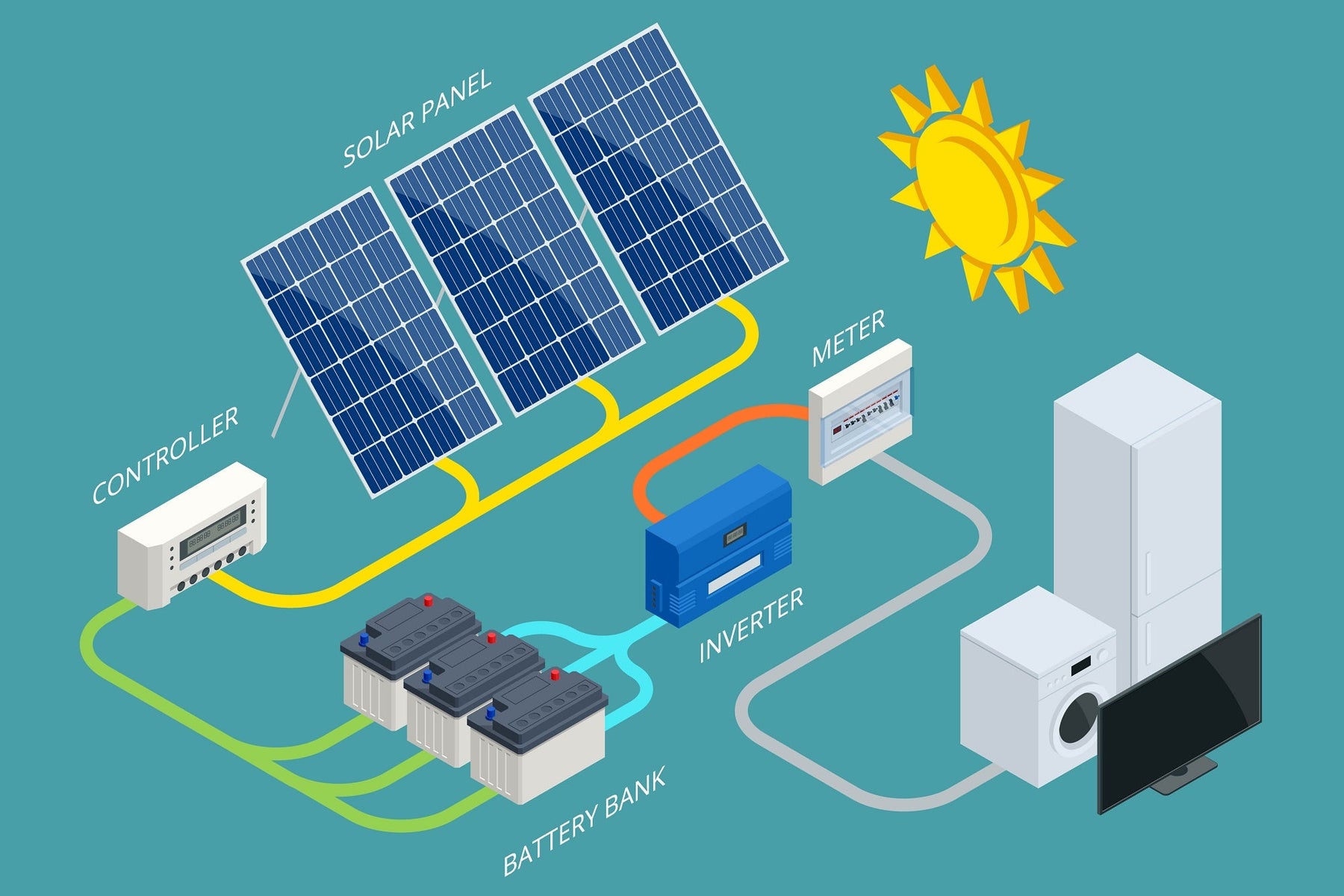
How Solar Inverter Works: A Complete Guide for Homeowners
If you are investing in solar power, one of the most significant parts of your system is the solar inverter. But did you ever wonder how a solar inverter operates? So, whether you are a homeowner converting to clean energy or just curious about how solar power converts sunlight into usable electricity, it is important that you know the part an inverter plays.”
Here's a breakdown of everything you need to know about how solar inverters work, the different types and their components and performance factors.
Basics of a Solar Inverter: What It Is & Why It Matters

All solar power systems need a solar inverter. Its main role is straightforward but crucial, changing the direct current (DC) produced by solar panels into alternating current (AC), the type of electricity that powers homes and businesses in hundreds of thousands across the USA.
If it wasn’t for this DC to AC conversion, none of the energy captured by your solar panels could be used in your home. In short, if your solar panels are the “muscles” of your system, then the inverter is their “brain” that allows everything connected to it all to work properly together.
But there is more to an inverter than just conversion, it watches over energy output, implements safety measures, e.g., anti-islanding protection - and helps maintain a proper functioning installation.
Efficiency, Losses & Factors Affecting Inverter Performance
If you’re wondering how solar inverters work for efficiency, you’ll need to understand efficiency curves - charts that demonstrate how effectively an inverter transforms power across different load levels.
Most well known inverters like different brands operate between 95% to 98% efficiency, such as Fronius and the new Enphase IQ. But there are many things that can impact the result:
- Temperature fluctuations
- Improper system sizing
- Dust accumulation
- Voltage mismatch
Efficiency is important even with small losses. A well installed inverter ensures maximum power production and system durability.
How Does a Solar Inverter Work: Step-by-Step Process
A quick rundown of how an inverter for solar works To really understand what a solar inverter does, here is a basic guide:
- Sunlight strikes the solar panels and creates DC electricity.
- The panels deliver the DC electricity to the inverter.
- It turns DC into AC with the help of inner transistors and capacitors.
- What happens is the converted AC electricity travels to your house’s electrical panel.
- Any surplus power can either be exported to the grid or saved in a battery (for hybrid systems).
This process occurs over the course of the day to provide a continuous flow of clean power.
Types of Solar Inverters: String, Micro, and Hybrid Inverters

There are many varieties of solar inverters that will vary based on your system and budget.
String Inverters: Used widely in residential systems, string inverters link solar panels in a series (a “string”). They’re affordable but if one panel lags, it can slow down the string.
Microinverters: Microinverters such as Enphase IQ are built into each panel, so you get autonomy. They are more efficient and easier to monitor, but cost more up-front.
Hybrid Inverters: Hybrid inverters are a relatively new concept and they combine your solar panels with your battery storage. These systems can store surplus energy in day and for night or power outages, which is perfect if you are considering to be energy independent.
Key Components Inside a Solar Inverter
At the heart of all solar inverters are several key elements that allow it to perform optimally:
-
Microcontroller unit (MCU): Function as the control system.
-
Power transistors: They manage the conversion of DC to AC.
-
Capacitors: Smooth out voltage fluctuations.
-
Cooling mechanism: To prevent the fixture from getting too hot while the machine is in use.
-
Protection system: Allows anti-islanding protection for grid security.
These pieces are built to perform in the harshest conditions and are designed for easy use.
Why Choose Direct Solar Power?
We know and want you to get the most out of your solar. It doesn’t matter if you’re new and just learning how solar inverters work or you’re in the market looking for anywhere to buy a Fronius solar inverter - our expert team can help to steer you in the right direction when it comes to finding the best system for your home.
Check out our range of high-quality solar inverters and choose the perfect inverter for your needs.
Final Thoughts
Learning about how solar inverters work is the first step towards getting the most out of your solar system. Each of the components, from DC to AC conversion and hybrid inverter options all play a part in creating clean, sustainable energy.
Are you ready to power up your home with ease? Dive into our selection of inverters at Direct Solar Power and take a wise decision now.
Frequently Asked Questions
1. How does a solar inverter convert DC to AC?
A solar inverter uses power transistors to rapidly switch DC input voltage, generating alternating current (AC) that’s synchronized with your home’s grid power.
2. What types of solar inverters are there, and which one is best?
The main types are string, micro, and hybrid inverters. The best option depends on your setup - microinverters offer efficiency, while hybrid models provide flexibility with battery storage.
3. Can a solar inverter work without a battery?
Yes, a solar inverter can work without a battery in a grid-tied system, directly converting and feeding power to your home or the utility grid.
4. How efficient are solar inverters, and what affects efficiency?
Most quality inverters operate at around 95 - 98% efficiency. Heat, poor maintenance, and mismatched panels can affect performance.
5. What are the common faults in a solar inverter, and how to troubleshoot?
Typical issues include overheating, wiring faults, or error codes. Check connections, ventilation, and your efficiency curve readings regularly for smooth operation.

Leave a comment